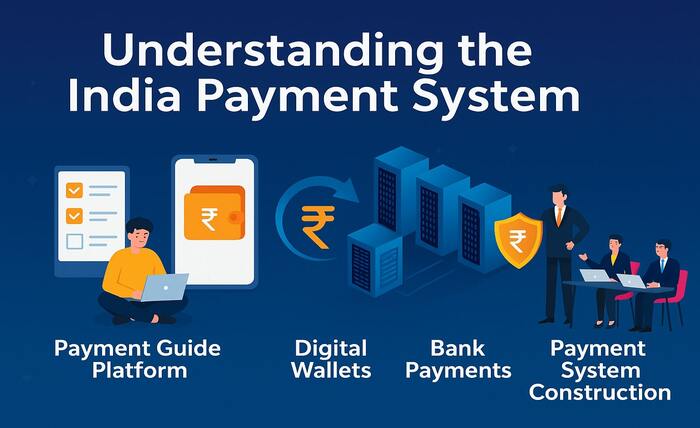India Payment System (印度支付系统) – A Modern Infrastructure for Digital Payments and Global Access

Understanding India’s Digital Payment Landscape
In a country of over a billion people, managing financial transactions efficiently was once a monumental challenge. But India has turned that challenge into opportunity. Over the past decade, the 印度支付系统 has become one of the most advanced financial infrastructures in the world. From mobile payments on local street vendors to enterprise-level international settlements, the system has scaled securely, efficiently, and with remarkable accessibility.
India’s payment ecosystem isn’t just about speed—it’s about inclusion, regulation, and opportunity. The platform welcomes both domestic and international users, including foreign businesses, e-commerce platforms, and global remittance service providers, all while remaining affordable and secure.
What Is the India Payment System?
The term India Payment System covers a broad network of technologies, financial channels, and regulatory frameworks that allow seamless, real-time payments across India and beyond. It encompasses:
- UPI (Unified Payments Interface) for real-time bank-to-bank transfers.
- Digital Wallets like Paytm, PhonePe, and Amazon Pay for consumer convenience.
- Bank Transfer Services for high-value or recurring transactions.
- QR Code Scanning and NFC for point-of-sale transactions.
- Card Payments for domestic and international shoppers.
- Payment Gateways and APIs for integrating e-commerce and B2B systems.
These methods support millions of users daily—be it a student buying coffee or an international company paying contractors in Mumbai.
The Role of UPI in India’s Payment Innovation
Among the most transformative innovations is UPI, which has become the gold standard for Indian digital payments. Built by NPCI and regulated by RBI, UPI enables bank-to-bank transfers using a mobile device—instantly, securely, and 24/7.
No need for IFSC codes or account numbers anymore. A single Virtual Payment Address (VPA) linked to your bank account can now handle all your payment activity, whether you’re buying movie tickets or receiving salary.
For global businesses, this system minimizes friction while maximizing transparency and speed—something essential for scaling operations in India.
Why Digital Wallets Remain Essential in India
Despite UPI’s dominance, digital wallets continue to thrive thanks to their ease of use, loyalty programs, cashback rewards, and ability to function without linking a bank account immediately.
Popular wallets like PhonePe, Paytm, and Google Pay boast hundreds of millions of users. Each offers unique features:
- PhonePe is known for its smooth UPI integration and financial tools.
- Paytm offers marketplace services, ticket booking, and utility payments.
- Amazon Pay ties in perfectly with e-commerce shopping and discounts.
Wallets are especially beneficial for tourists, expatriates, and younger users new to banking.
Banking in India: Gateway to Full Payment Access
Opening a bank account in India is often the first step for accessing the India Payment System—especially for foreigners or businesses. Fortunately, platforms like India Payment Guide assist with bank onboarding, compliance, and document verification.
Typically, account opening requires:
- Passport and valid visa
- Indian address proof (rental agreement or utility bill)
- An employer/school letter (for students or employees)
- Initial deposit (₹2000–₹10000)
Once opened, your bank account can link to UPI and wallets, making it possible to perform full-scale digital transactions with instant confirmation.
Enterprise-Level Payment System Construction Services
For businesses targeting Indian markets, integrating payment capabilities into your website or platform can seem daunting. But that’s where India Payment Guide’s construction services come in.
From building custom API connections, enabling UPI & QR code collections, to managing security certifications like PCI DSS and SSL deployment, the platform offers white-glove support.
They also assist in deploying localized servers, implementing risk control systems, and meeting RBI compliance requirements—an essential step for fintech companies, SaaS platforms, or global marketplaces aiming to operate in India.
Security, Licensing, and Regulatory Requirements
India’s payment system runs under strict regulatory compliance governed by:
- RBI (Reserve Bank of India) Licensing
- NPCI Certification
- PAN, GST, and ROC registration
- KYC/AML protocols
- Technical certification for platforms (PCI DSS, SSL, local servers)
Whether you’re a local business or a multinational corporation, these regulatory layers ensure fair play, customer data protection, and anti-fraud frameworks. Proper documentation, review, and licensing processes typically take 3–6 months.
Cost of Digital Transactions in India
What makes the India Payment System especially attractive is its affordability. Here’s a quick overview:
- UPI P2P (person to person) – Free
- UPI P2M (merchant) – 0.5% to 1%
- Wallet payments – 0.5% to 2% for merchants
- Debit Cards – 0.4% to 0.9%
- Credit Cards – 1.8% to 3%
- International Credit Cards – 2.5% to 4%
- Gateway/processing fees – ₹2 to ₹5 per transaction
- Settlement time – T+1 or T+3, depending on provider
This low-cost infrastructure makes it easier for small businesses, startups, and even street vendors to join India’s digital economy.
How India Payment Guide Helps You Go Digital
IndiaPaymentGuide.com is more than just an information portal. It’s a hands-on partner for businesses, offering:
- End-to-end payment integration
- Professional consulting for compliance
- Fast wallet setup
- Bank account onboarding
- Custom payment gateway construction
- Risk management setup
- Technical documentation and support
Backed by years of expertise and an expansive understanding of India’s fintech regulations, they help businesses make a smooth, secure entry into the Indian payment market.
India Payment System – Future Outlook
India’s payment systems are constantly evolving. With innovations like voice payments, offline UPI, biometric authentication, and tokenized card payments on the horizon, the ecosystem is getting stronger every year.
As India pushes toward a cashless society, adoption continues across age groups, regions, and economic sectors. Government incentives, global partnerships, and open APIs ensure that India remains a leader in digital financial innovation.
Whether you’re a tech founder or a freelancer, a supplier or an investor—the India Payment System offers the infrastructure, security, and flexibility to scale in one of the fastest-growing economies in the world.
Conclusion: India Payment System – A Global Model for Modern Finance
The 印度支付系统 stands as a shining example of how technology, regulation, and accessibility can come together to redefine the way a nation transacts. From UPI’s real-time bank transfers to digital wallets and secure merchant gateways, the system has evolved to serve not just a billion Indians—but also global users, enterprises, and investors who wish to engage with India’s digital economy.
Whether you’re an individual managing day-to-day expenses or a business scaling into the Indian market, this payment infrastructure offers speed, security, scalability, and cost-efficiency like few others in the world. And with continuous innovation and support from platforms like IndiaPaymentGuide.com, entering and navigating this system has never been easier.
As India continues to lead in digital finance, embracing the India Payment System isn’t just an option—it’s an opportunity.
FAQs: Quick Answers for New Users
What is UPI and how to activate it?
UPI is a mobile-based real-time bank transfer system. Download an app like Google Pay or PhonePe, verify your number, link your bank, and set a UPI PIN.
How can foreigners open a bank account in India?
With a valid visa, passport, address proof, and initial deposit, foreigners can open an account at banks like HDFC, ICICI, or SBI within a week.
Which wallet is better: Paytm or PhonePe?
PhonePe offers better UPI experience, while Paytm includes more services like shopping and bill payments.
What qualifications are needed to access India’s payment systems?
Businesses need GST, PAN, ROC, and RBI/NPCI certification. Technical standards like PCI DSS and SSL are also required.
How much do payments cost?
UPI P2P is free. Merchant and card payments range from 0.5% to 4%, depending on method and provider.





